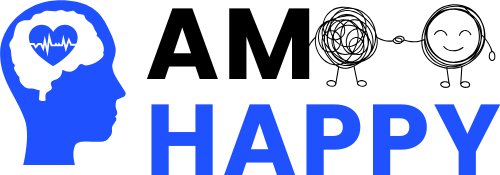Compassion Focused Therapy (CFT) is a therapeutic approach that can be particularly helpful with clients who struggle with self-criticism and shame. We know that clients who struggle with these have a difficult time showing themselves, compassion, patience, and kindness. This can lead to a range of mental health concerns and challenges. Keep reading to learn everything you need to know to create a Compassion-Focused Therapy Treatment Plan, with an example.
Clients who struggle with shame and self-criticism often share a history of bullying, abuse, highly expressed emotion within the family, neglect, or were shown little to no emotion growing up. This can make them highly sensitive to criticism or rejection, which can create challenges in social and professional settings as adults.
When you’re using CFT, you’ll be working with your clients to help them feel reassured, safe, content, and to pick up on warmth from others. This can be done with three different emotion regulation systems; threat and protection systems, drive, resource-seeking and excitement systems, and contentment, soothing, and safeness systems.
All living things, humans and animals alike, have developed a threat-detection and protection system. This system has been developed to protect us and often works in a “better safe than sorry” manner. Individuals may find themselves sensitive to what they perceive as threats. Our response options within this system are influenced by our genes and our learned experiences.
View all of our Compassion-Focused Therapy Worksheets
The drive and excitement system motivates us to work toward goals. This can include rewards and resources that are basic needs and beyond. When you win a competition or get a promotion at work, you can feel excitement and pleasure. This reward system can also be active with substance abuse.
The contentment, soothing, and social safeness system can occur when our basic needs are being met. Think of this as a time of not needing or looking for something. This system acts as our internal mediator for the treat-detection and protection system. Compassion-focused therapy aims to help clients develop this particular system.
Setting Goals and Objectives With Clients in a Compassion-Focused Therapy Treatment Plan
Individuals who are struggling with shame or self-criticism often have an overactive threat protection or drive system. Clients may struggle to feel safe with themselves and within interpersonal relationships. This can occur among adults who have developed anxious and avoidant attachments due to childhood experiences.
When you begin to develop your compassion-focused therapy treatment plan, you should have an understanding of the different systems your client is experiencing. This information is commonly learned during a comprehensive mental health assessment. Once you have an idea of how shame and self-criticism are affecting their current challenges or psychological distress, you can begin developing their personalized CFT treatment plan.
Keep in mind that your treatment plan should reflect the therapeutic approach you wish to use, and be realistic for your client. It may be wise to base some of the treatment goals on goals or challenges that your client highlighted during their mental health assessment.
Additionally, brainstorm resources that can enhance your therapy session. This may include the use of worksheets from professional resources, like TherapyByPro. TherapyByPro offers a range of resources for mental health professionals, including compassion-focused therapy worksheets. Examples of CFT worksheets you could use include:
What to Include in a Treatment Plan for Compassion-Focused Therapy
For the remainder of this article, we will focus on developing a personalized compassion-focused therapy treatment plan. We will be using the TherapyByPro Counseling Treatment Plan Template. This is a customizable template that can be used in a range of clinical settings with various mental health disorders. Continue reading for Jane’s story.
Jane’s Story:
Jane is a 24-year-old female who was referred to the outpatient substance use disorder treatment program that you work at. She recently completed eight weeks in a residential rehabilitation program, which began with a medical detox. Jane has been struggling with excessive drinking behaviors since the age of 19 and sought treatment on her own.
Jane shared that she lost her job due to poor work performance, which she recognizes as the result of her drinking behaviors. Jane has financial and emotional support from her parents, which has allowed her to focus on her treatment and sobriety. Jane was diagnosed with alcohol use disorder, severe, and began taking intramuscular injections of Vivitrol to aid in her recovery.
Jane indicated that she developed a tolerance and experienced withdrawal symptoms. She often consumed more alcohol than she initially planned, and was unable to control or limit her use. She has tried to reduce her drinking before but has been unsuccessful in her efforts. Not only that, but she endorsed experiencing cravings and reported drinking and driving on more than one occasion. Jane is motivated for her recovery and is agreeable to participating in an Intensive Outpatient Program (IOP) five days each week, with additional individual therapy sessions. Jane found benefit in attending Alcoholics Anonymous (AA) meetings and has found a home group for continued support at home.
Agencies Involved and Plans for Care Coordination
Care coordination in this case begins with the referral for treatment from her inpatient provider. This ensures that you’re able to receive relevant information from her treatment provider, including her medication regimen, which can be shared with the prescribing physician within your outpatient program. Ensure that you have the proper consent of release to speak with her previous treatment provider
Example for Jane:
Care Coordination:Referring inpatient treatment facility, (123)456-7890
Clinical Diagnoses
Jane was diagnosed with alcohol use disorder at her inpatient treatment facility. This diagnosis is supported by the following symptoms:
- Alcohol is taken in larger amounts than intended
- A persistent desire to cut down, and not being able to do so
- Experiencing cravings
- Development of a tolerance
- Experiencing withdrawal
- Recurrent use in hazardous situations
- Continued use despite its effect on her work performance
Example for Jane:
Clinical Diagnosis: Alcohol Use Disorder 303.90 (F10.20), severe
Current Medications and Responses
Jane began taking the intramuscular injection, Vivitrol, during her inpatient treatment. Vivitrol works by binding to receptors in the brain, which blocks the euphoria associated with being drunk or drinking. Individuals can still experience the signs of intoxication like impaired motor coordination, but will not experience the same pleasure. She can work with the physician on staff to continue receiving her medication.
Example for Jane:
Current Medications: Vivitrol injection once per month
Presenting Problem and Related Symptoms
This section of your treatment plan should include your case conceptualization for Jane’s presenting concerns. The information included should relate to the treatment plan goals that will soon follow
Example for Jane:
Jane, a 24-year-old female, has been referred to outpatient treatment after completing an eight-week residential rehabilitation program that began with medical detox. She has struggled with excessive alcohol use since the age of 19 and sought treatment voluntarily. Diagnosed with severe alcohol use disorder, Jane has experienced tolerance, withdrawal symptoms, and difficulty controlling her drinking despite efforts to reduce consumption. She also reported cravings, consuming more alcohol than planned, and engaging in risky behaviors such as drinking and driving.
Jane’s alcohol use has significantly impacted her life, directly contributing to the loss of her job due to poor work performance. She has financial and emotional support from her parents, allowing her to prioritize treatment and recovery. Jane is now receiving intramuscular Vivitrol injections to aid in her recovery and has agreed to participate in an Intensive Outpatient Program (IOP) five days a week, supplemented with individual therapy. She has also found value in attending Alcoholics Anonymous (AA) meetings and has a home group for ongoing support.
Goals and Objectives
The goals and objectives section of your treatment plan should be specific to your clients goals, and the therapeutic lens that you’re using. Ensure that your treatment plan goals are realistic and attainable given your clients current concerns and resources.
Example for Jane:
Goal 1: Improve Emotion Regulation
- Objective 1: Utilize soothing rhythm breathing exercises to cope with emotional distress
- Objective 2: Identify emotional triggers and compassionate responses to said triggers
- Objective 3: Use compassionate letter writing to process and address challenging emotions each week
Goal 2: Improve Self-Compassion and Decrease Self-Criticism
- Objective 1: Use guided imagery exercises to activate the soothing system
- Objective 2: Practice compassion self-talk at least once per day at home
- Objective 3: Use journaling, at least once per week, to explore and process the origins of self-criticism
Goal 3: Focus on Compassion Towards Others
- Objective 1: Use perspective-taking exercises to explore compassion
- Objective 2: Practice a minimum of one act of kindness per day
- Objective 3: Use role-playing to practice compassionate communication exercises
Specific Interventions to Be Used
This section of your treatment plan is used to list specific interventions that can be used to support your client’s growth in treatment.
Example for Jane:
Intervention 1:
Engage in compassionate self-talk
Responsible person: Jane
Intervention 2:
Journaling to reflect on self-criticism
Responsible person: Jane
Intervention 3:
Use soothing rhythm breathing exercises
Responsible person: Jane
Intervention 4:
Functional analysis of emotional triggers
Responsible person: Counselor A and Jane
Intervention 5:
Perspective-taking exercises to understand others’ perspectives
Responsible person: Counselor A and Jane
Family Involvement
At this time, it does not appear necessary to involve her family in treatment. Her parents are supporting her financially so that she can focus on her recovery. If necessary, you may recommend family sessions at a later date.
Example for Jane:
Family Involvement: None at this time
Additional Services and Interventions
Jane is actively participating in Alcoholics Anonymous meetings and has established a home group in her community.
Example for Jane:
Additional Services: AA meetings in local community
Estimation for Completion
Intensive Outpatient Programs (IOPs) can range in duration, commonly from eight to twelve weeks. During this time, Jane will be engaging in group therapy five days per week, with weekly individual sessions. Based on the severity of her substance use disorder, we will initially plan for three months of IOP. We can then reevaluate her treatment needs and adjust her treatment schedule accordingly.
Example for Jane:
Estimated Time for Completion: Twelve weeks of IOP treatment; Group therapy five days per week with one weekly individual session.
Aftercare Plans
Aftercare plans should be written as if Jane were to disengage from treatment today. This is an important section in Jane’s treatment plan because she is currently taking medications, and has recently completed an inpatient treatment program.
Example for Jane:
Aftercare Plans: Meet with the primary care physician for continued medication management services, and a consultation about appropriate outpatient treatment programs.
Final Thoughts On Creating a Treatment Plan for Compassion-Focused Therapy
Thank you for taking the time to explore developing a CFT treatment plan! Compassion-focused therapy is a powerful therapeutic approach that can be impactful for a range of mental health challenges and disorders. In addition to addressing underlying shame and self-criticism, clients can learn to strengthen their emotion regulation skills, which can decrease the psychological distress they experience on an everyday basis.
With the activation of the soothing system, clients can begin to experience safety with themselves and in the world around them. This can be a transformative experience, facilitating emotional resiliency and strengthening personal relationships.
If you are interested in learning more about compassion-focused therapy and how it can be incorporated into your field, we encourage you to explore training and continuing education opportunities. Knowledge is power, and having a diverse set of skills in a clinical setting can help you provide comprehensive and whole-person care.



1 Comment
Have you ever thought about creating an e-book
or guest authoring on other blogs? I have a blog based upon on the same ideas you discuss and would really like to have you share some stories/information. I know my audience would enjoy
your work. If you are even remotely interested,
feel free to send me an email.